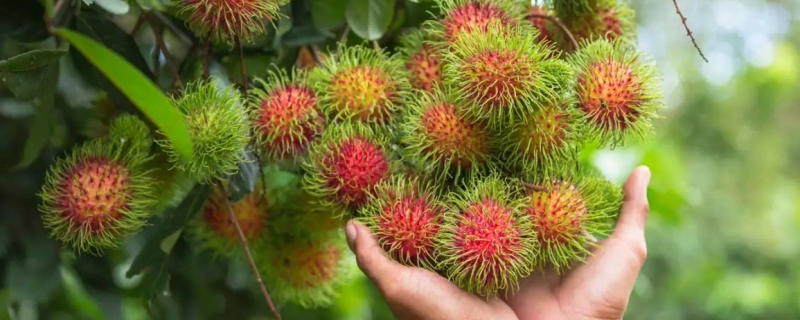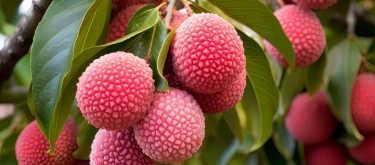Rambutan: Taste Profile, Aroma, Benefits and Health Risks
Rambutan is a tropical fruit native to Southeast Asia, closely related to lychee and longan. With its hairy, red or yellow spiky skin and translucent, juicy flesh, rambutan is a visual and culinary delight, celebrated for its sweet and slightly tangy flavor.
What does Rambutan taste like?

Rambutan has a sweet, mildly tangy flavor with floral and tropical notes, similar to lychee but slightly less aromatic. Its refreshing taste makes it a popular snack and a versatile ingredient in desserts and beverages.
- Taste: Sweet and fruity, with subtle tartness and hints of grapes and roses.
- Aroma: Lightly floral and tropical, with delicate sweet notes that intensify as the fruit ripens.
- Texture: Juicy and slightly firm, with translucent, jelly-like flesh surrounding a central seed.
In-Depth Flavor Analysis of Rambutan
The flavor of rambutan is characterized by its balance of natural sugars and mild acidity, creating a refreshing and satisfying experience. The sweetness is pronounced but not cloying, while the subtle tanginess adds a layer of complexity. The floral undertones, reminiscent of rosewater, elevate the tropical profile, making rambutan both exotic and approachable.
The texture contributes significantly to its appeal: the flesh is succulent and almost melts in the mouth, contrasting beautifully with the fruit’s spiky exterior. The seed inside is inedible but easy to remove, allowing the fruit to be enjoyed whole or incorporated into dishes.
How Can Rambutan Be Used in Cooking?
Rambutan is versatile and can be enjoyed fresh or in various culinary applications:
- Fresh Snack: Eaten raw as a refreshing and hydrating treat.
- Fruit Salads: Combined with other tropical fruits like pineapple, mango, or dragon fruit for a vibrant mix.
- Desserts: Used in sorbets, jellies, or atop cakes for a sweet and juicy touch.
- Beverages: Blended into smoothies or cocktails for a tropical flavor boost.
- Savory Dishes: Occasionally used in Southeast Asian cuisines in chutneys or paired with seafood for a sweet and tangy contrast.
Health Benefits of Rambutan
Rambutan is not only delicious but also packed with nutrients and health benefits:
- Rich in Vitamin C: Supports immune health and acts as a powerful antioxidant.
- Hydration: High water content makes it a natural way to stay hydrated.
- Fiber Content: Aids digestion and promotes gut health.
- Iron Source: Contributes to improved blood circulation and oxygen transport.
- Low in Calories: A nutritious snack for those mindful of calorie intake.

Are There Any Precautions When Consuming Rambutan?
While rambutan is generally safe, here are a few considerations:
- Seed Toxicity: The seed is inedible and should not be consumed, as it may contain toxic compounds.
- Allergies: Rare, but individuals allergic to related fruits like lychee should be cautious.
- Ripeness: Overripe fruits may ferment slightly and develop an off-taste.
How to Choose and Store Rambutan?
- Choosing: Look for bright red or yellow fruits with firm, slightly spiky skin. Avoid fruits with overly dry or darkened skin, as these may be overripe.
- Storage: Store rambutan in a cool place or refrigerate in a breathable container. Best consumed within a few days for optimal freshness.
Fun Facts About Rambutan
- Name Origin: The name "rambutan" comes from the Malay word rambut, meaning "hair," referencing its spiky skin.
- Cultural Significance: A popular fruit in Southeast Asia, rambutan is often gifted during festivals and celebrations.
- Relatives: Rambutan is closely related to lychee and longan, sharing similar flavors and textures.











